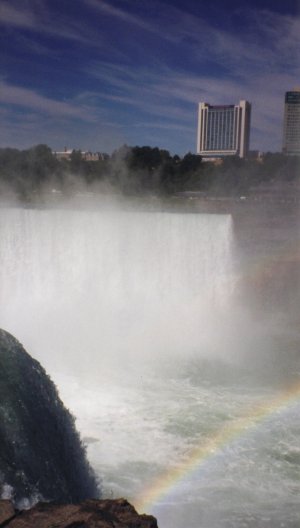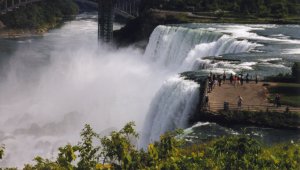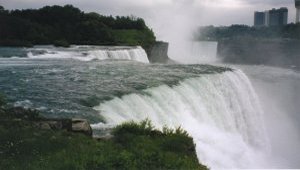 |
 |
虹(にじ)は,大気中の水滴が太陽の光を屈折して生じます.
光の波長が違うと,水滴の中で屈折される角度が少しずつ異なるために,
七彩の虹になります. ふつうに見られるのは,内側が青で外側が赤の主虹(しゅにじ)ですが, まれに,主虹に加えて副虹(ふくにじ)が見られます. 副虹は,主虹よりも水滴内での屈折の回数が多く, 主虹と反対に,内側が赤で外側が青になります. 虹は,英語では rainbow,フランス語では L'arc en Ciel と呼びます.
上:主虹 |
|
Rainbows form when drops of water in the air refract and disperse sunlight.
Since the refractive angle depends on the wavelength, the white light is dispersed to create a rainbow in six colors.
Only a primary rainbow can usually be seen, but sometimes a secondary rainbow can be seen together with it.
Secondary rainbows form when the light is refracted twice in the drops.
Rainbows are called Niji in Japanese.
Above right : A primary rainbow
| |

|

|
| 1999/07/05 Photographed at Niagara Falls by Y.Tajima | |
 虹のできるしくみ
虹のできるしくみ Go to Submenu
Go to Submenu Go to Menu
Go to Menu